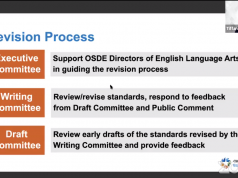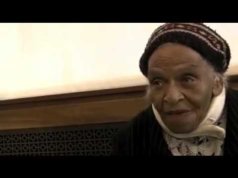
It used to be almost cliché that when I met people, at a party or on an airplane, and told them I was a mathematician, they would respond that they had always been terrible at math and could hardly balance a checkbook. This is clearly hyperbole: First, they certainly could do basic arithmetic. Second, most people don’t balance checkbooks anymore.
As a mathematician, I’m unhappy that people confuse mathematics with basic arithmetic, and I’m also unhappy it’s socially acceptable to claim incompetence at it. For example, no one tells English professors that they are terrible at English — that they can hardly read a newspaper.
On the other hand, I understand exactly what inspires my interlocutors. For example, adding a column of two-digit numbers is a task that is easy to understand, tedious to do, stressful under time pressure, and only made worse by having to repeat it multiple times with other sets of numbers. What I’m describing is a classic grade-school arithmetic lesson, at least when I was in a Chickasha grade school during the 1950s. I found it as unpleasant as my kids did 30 years later. Some unpleasant learning experiences, of course, are necessary, but what should students learn and how should arithmetic and other mathematics be taught so they learn it?
Let’s look with some care at an example of an arithmetic problem: 17 times 22. We begin with artificial applications: If bananas cost 17 cents each, how much do 22 bananas cost? This is a problem invented to require the multiplication of 17 by 22. We could just as easily ask if zarfs weigh 17 dibleks each, how much do 22 zarfs weigh? This sort of thing may make multiplication problems more interesting, but it may just as well make them seem irrelevant. Here’s an example of artificial math applications as cited by author Elizabeth Green in a July 2014 New York Times piece called, “Why do Americans Stink at Math?”: “It’s like, Bill has three goldfish. He buys two more. How many dogs live in London?” Actually I’m fonder of a line from a Tom Lehrer song that makes the same point: “When it’s noon on the moon then what time is it here?”
Division of fractions is another grade-school arithmetic topic where the procedure is easy to learn: invert and multiply. For example, two-thirds divided by five-sevenths is fourteen-fifteenths. Now, try to imagine a problem where this division is actually required. Nothing simple like banana shopping works.
In fact, even the simpler task of inventing a problem where the solution requires dividing by one-half is already challenging. Liping Ma, an independent scholar on the teaching and learning of mathematics, asked U.S. and Chinese arithmetic teachers to do exactly that. The U.S. teachers failed miserably, highlighting the relative uselessness of artificial applications in helping children to make the connection between arithmetic and its applications.
We should teach number sense
My example 17 times 22 is arbitrary, at least as far as the 22 goes. The 17 comes from a classic use of mental arithmetic as a catalyst in measurements of stress like blood pressure. The subject is told to start with some given four-digit number, like 1,208, and mentally subtract 17, then subtract 17 from that, and repeat. If you tried that after reading it, you know it is indeed stressful. It is slightly less stressful if you realize that subtracting 17 is like first subtracting 20 and then adding 3. You could even use that to multiply 17 times 22: 20 times 22 minus 3 times 22, or 440 minus 66, which can, in turn, be calculated as 440 minus 60 minus 6. Recognizing how numbers are expressed as sums or differences (or products) of numbers with fewer significant digits is called number sense. Children’s math skills benefit from early exposure to number sense and estimation, especially if it accompanies their first experiences with arithmetic.
Good scientists are usually master estimators. The famous Italian physicist Enrico Fermi was also known for his recreational “Fermi problems” — estimations in which one arrives at the solution using common sense. For example, how many trees are there in Oklahoma? An eighth-grade example: How many doughnuts could we put in this classroom? Or, how fast does hair grow, in miles per hour?
Fermi problems are recreation, but they mimic the kind of numerical estimates that scientists and engineers do. Such problems are within the grasp of reasonably bright middle or high school students, and these types of estimating problems — which require number sense — should be taught more in schools.
To use arithmetic, the skills of application, estimation and number sense come into play. In years past, the algorithms of arithmetic were taught in isolation, with the hope that the skills would be acquired with use. More recently, curricula were developed that taught application, estimation and number sense from the very beginning. Children were expected to use these, along with technology, equally.
In the hands of a well-prepared and talented teacher, the new curricula work wonders. Unfortunately, not all teachers are talented or prepared, and students are exposed to these concepts mechanically or by rote, especially if a standardized test is involved. You can imagine the frustration parents might feel if their child tells them that to compute 17 times 22 the way the teacher says to do it: You should write 17 as 20 minus 3, and 22 as 20 plus 2, and then seek the product from this representation, perhaps resorting to a calculator to form the products and combine the four resulting terms.
This happens. One of the parents whose child presented him with this kind of challenge is a Harvard math professor named Wilfried Schmid. Schmid is a year older than me (he was born in Hamburg in 1943) and was a math prodigy as a Harvard undergrad and a Berkeley grad student. Since 1978, he’s been back at Harvard as a full professor. Schmid has been very involved in K-12 mathematics education both nationally and internationally.
Schmid’s interest in the subject arose in 1999 after being disturbed by the experiences of his second-grade daughter in her mathematics class, and he was heavily involved in the drafting of the Massachusetts Mathematics Curriculum Framework in 2000 as a result. Later, he served on the National Mathematics Advisory Panel of the U.S. Department of Education. The Massachusetts curricula blended application, estimation, and number sense with the basics of arithmetic, but it still needed talented and prepared teachers to succeed.
How common are heroes?
To illustrate the dilemma of improved curricula with ill-prepared teachers, consider the Fermi-type problem: How common are heroes? There is a foundation in Israel called Yad VaShem, which has tried to collect all the examples it can of Europeans who saved Jews from the Nazis during the war. It has identified about 25,000 of these “righteous among the nations” folks out of about 100 million people in occupied Europe during World War II. That’s 2.5 out of every 10,000 people. This is a useful lower bound to keep in mind for any activity that depends on extraordinary people.
Another way to estimate what fraction of people teaching math are actually talented and prepared for it is to use membership in the National Council of Teachers of Mathematics (NCTM). It has 80,000 members, which includes some college and university faculty. There are about 400,000 middle and high school math teachers in the U.S., so somewhere between 10 and 20 percent belong to NCTM. (NCTM usually says 10 percent, which is the same percentage the science teachers organization uses.) That still leaves 80 to 90 percent of American math teachers who are not ready to teach from the types of curricula that blend application, estimation, and number sense with the basics of arithmetic.


















